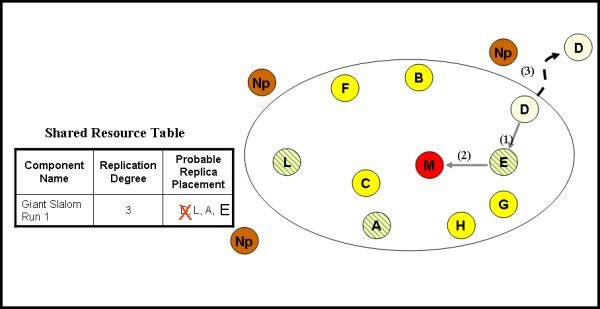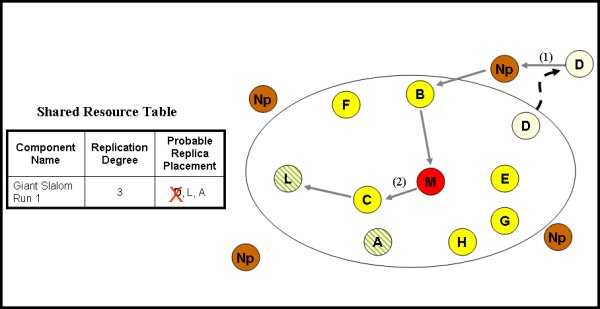In Figure 1, node D realizes it is going to leave the dense MANET when it still belongs to the network. Thus, it still has enough time to offload its shared resources to node E. Node E, upon accepting to replicate the resources, notifies the manager that consequently updates SRT.
|
|
|
In Figure 2, D realizes it has left the networks only when it is out of dense MANET. By exploiting a possibly unstable connection it advises the manager of its departure. The manager updates SRT (i.e., it deletes D entry from all D shared resource entries) and commands a new replica diffusion to node L (that is present in the entry's Probable Replica Placement).
|
|
|
In Figure 3, node D fails (or equivalently abandons abruptly the dense MANET). The manager realizes the problem only when it checks AUM messages consistency (it receives fresh updates from L and A, but not from D). Then, it updates its SRT (by deleting D entry) and commands a new replication to node L.
|
|
|


